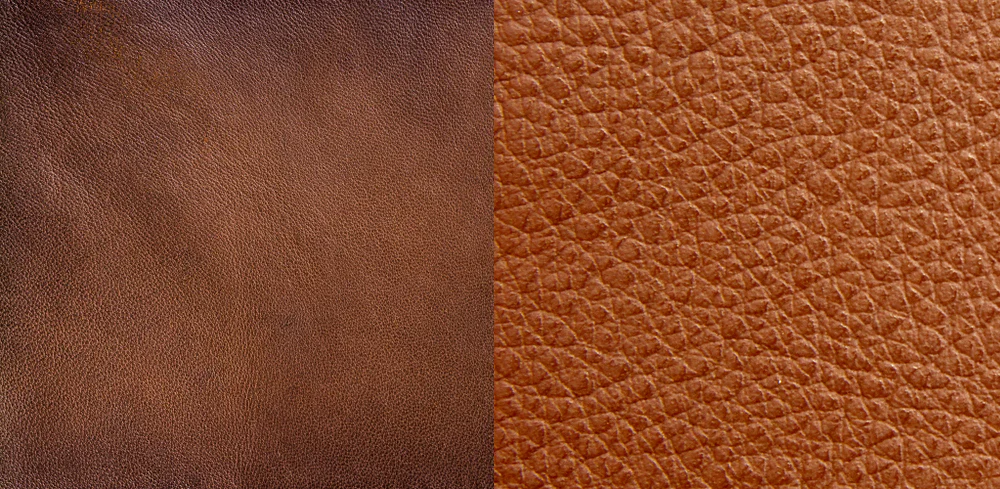You may hear the terms “top grain” and “full grain” a lot when you shop for leather. It can be hard to tell the difference between the two if you don’t already love leather. Don’t they both sound like high-end, high-quality options? The truth is that they are both great, but they are not the same. Each one has its own personality, price, and use. Knowing the difference between top grain and full grain can help you shop smarter and buy the right item, whether you’re looking for a leather jacket that will last for years or a handbag that looks sleek and polished.
Defining Full Grain Leather
The best leather available is full-grain leather. It is extracted from the hide’s outermost layer, which contains all of the natural fibres and grain. This implies that each piece retains its original texture, organic markings, and even minor flaws that contribute to its individuality.
Full grain is extremely strong and long-lasting because it isn’t sanded or corrected. It’s actually the type of leather that improves over time. It acquires a patina—a natural sheen and depth of colour, as time passes, giving it a richer, more exquisite appearance. For heirloom-quality leather goods like exquisite furniture, high-end jackets, and bags, full-grain is the preferred option. The catch? Additionally, full grain is the priciest. However, it’s well worth the investment if you want something that will endure for decades and even age well.
What About Top Grain Leather?
The top layer of the hide is also used to make top-grain leather, which is slightly modified to make it smoother and more consistent. It is sometimes given a finish to give it a polished appearance and sanded down to eliminate flaws during processing. As a result, the leather lacks some of its natural character but feels softer and more flexible than full-grain.
Top–grain does not acquire the same deep patina as full-grain as a result of this process. Still, it’s strong, well-made, and typically less expensive. Top grain is used to create many high-end handbags and leather jackets because it balances style and functionality.
To put it another way, top grain is sleek and trendy, while full grain is rough and genuine.
How Do They Feel and Appear?
The difference is most noticeable at this point. The surface of full-grain leather is naturally somewhat textured. Subtle wrinkles, scars, or variations in the hide may be visible to you; these are indications of authenticity rather than defects. It initially feels firm, but as you use it, it softens and conforms to your hands or body. It gradually acquires the worn-in, vintage appearance that fashionistas adore. Conversely, top grain leather appears smoother and more consistent.
There are fewer natural marks visible because it has been sanded. Because of this, it’s a fantastic option for sophisticated, polished items that must look perfect straight out of the box. Although it will not acquire the same patina as full grain, it is immediately softer to the touch.
Consider it this way: top grain is more about classic elegance that never goes out of style, whereas full grain tells a story as it ages.
Which Is Longer in Terms of Durability?
Full grain is the obvious winner in terms of longevity, but both varieties are robust. It is stronger and more resilient to deterioration since it preserves the hide’s natural fibres. With the right maintenance, full-grain leather goods can endure for decades and frequently get more exquisite with time.
Although some of the toughest outer fibres are removed during the sanding process, the top grain remains extremely strong. As a result, it is marginally less resilient to frequent use. Although it won’t age as gracefully as full grain, it will still last for many years.
Where Can You Locate Each Type?
High-end wallets, leather boots, exquisite furniture, and handbags are just a few examples of the luxury goods that frequently use full-grain leather. You can enjoy these things for the rest of your life after making a single investment. Top grain leather is frequently used in stylish handbags, jackets, belts, and even shoes due to its smoother finish. Because it gives a more polished appearance, it is also popular for items where uniformity is important.
The Disparity in Price
The two differ in price, which is frequently a deciding factor. Because it uses the best part of the hide and requires less processing, full grain is more expensive. Although still premium, top grain is typically more accessible and reasonably priced. Top grain is a fantastic option for buyers who desire the texture and appearance of premium leather without the high cost.
What Should You Pick?
The exciting part is that your lifestyle and personal style choices will ultimately determine whether you choose full grain or top grain. Full grain is the best option if you appreciate rough character, want a piece that tells a tale, and are willing to pay a little bit more. It’s ideal for statement pieces like a bag you’ll always treasure or a leather jacket you’ll wear for decades. Top grain leather might be a better option for you if you want a smooth, consistent appearance, a softer feel, and a slightly more affordable price. It’s fashionable, cozy, and ideal for daily fashion items.
Conclusion
Therefore, it is more important to consider which is better for you than which is “better” overall when it comes to top grain vs. full grain leather. Top grain is sophisticated, beautiful, and adaptable, whereas full grain is genuine, tough, and durable. Both are high-quality leathers that will add flair to your outfit, but which one you choose will depend on whether you prefer classic durability or contemporary shine.
Whichever option you decide on, spending money on high-quality leather is always a wise fashion choice. After all, leather only becomes better with time and never truly goes out of style.


